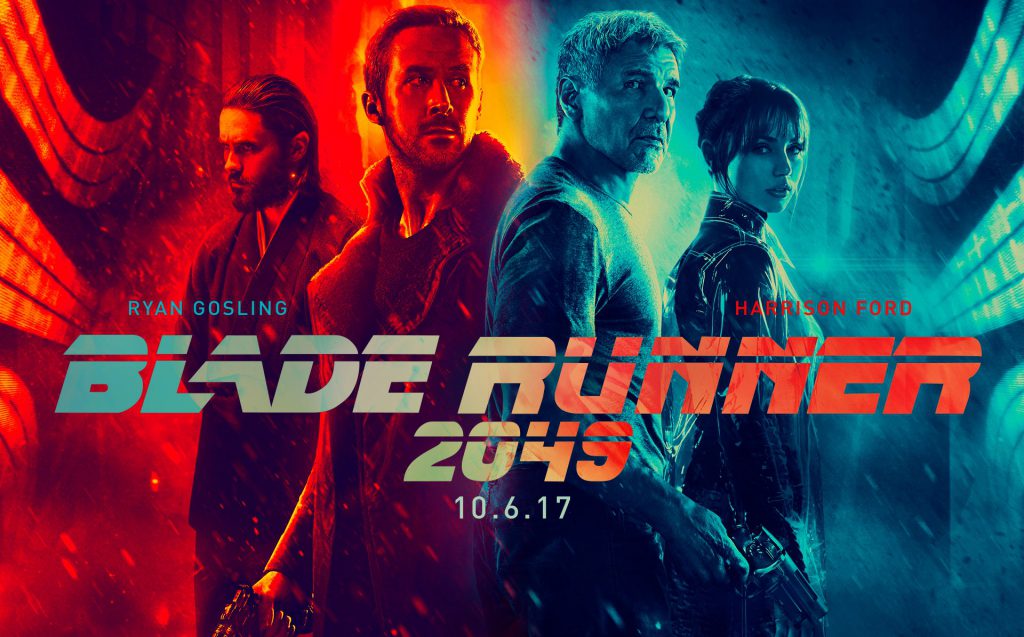Blade Runner 2049, the sequel to 1982’s cult classic Blade Runner has finally arrived to theaters.
The original Blade Runner, first released in 1982, is a science-fiction classic that was directed by Ridley Scott and featured amazing cinematography, brilliant visuals, iconic characters, as well as a musical score by Vangelis. The film was loosely based on Philip K. Dick’s classic novel Do Androids Dream of Electric Sheep?
This movie was credited in raising Harrison Ford’s star power after his phenomenal performace as the conflicted blade runner Rick Deckard alongside the scene-stealing Ratguer Hauer who played the charismatic replicant Roy Batty. Its themes raised questions on what it meant to be human, and whether the bio-engineered replicants were actually “more human than human” than the human blade runners whose primary objective was to eradicate them after they had outgrown their usefulness.
Blade Runner 2049 is directed by Denis Villeneuve, best known for Prisoners, Sicario, and the critically-acclaimed Arrival starring Amy Adams. The film is set 30 years after its predecessor, where we last saw Rick Deckard leaving the city with his replicant love interest Rachael. The story begins with a new blade runner, K–played by the charming Ryan Gosling–as he attempts to uncover a new mystery which inevitably leads him to retired former blade runner Deckard.
Unfortunately Blade Runner 2049 does not manage to repeat the emotionally-charged story or memorable characters which made its predecessor so successful. Half of Blade Runner 2049’s nearly three-hour running time focuses on Gosling’s character’s confusion as he makes his way through a bleak world that does not seem to fit in with the original movie’s unique aesthetic. This glacial pace, along with its convoluted storyline may test the patience of the casual movie goer.
To its credit, the set pieces and visual effects of Blade Runner 2049 are stunning, showcasing the deserted world outside the familiar cityscape. Still, the sequel fell short to live to the standard of its predecessor as the visual elements in the original Blade Runner did a better job at immersing its audience in that dangerous yet beautiful dystopian world.
While Ryan Gosling’s performance showcases his ideal casting as Harrison Ford’s successor in this world, other members of the cast have been relegated to a little more than cameos. The plot fails Robin Wright, who plays K’s commanding officer Lieutenant Joshi, as her acting potential remains untapped. While Jared Leto’s Wallace shows no real function to the story other than to look as (laughingly) menacing as possible. Even Harrison Ford’s role is little more than an extended cameo and less of a supporting role.
Another shortcoming of Blade Runner 2049 is its lack of memorable and three-dimensional characters. The original Blade Runner boasted some of the most iconic and recognizable characters in cinema, which include the brilliant Rutger Hauer as Roy Batty, Darryl Hannah as Pris, Joanna Cassidy as Zhora, and Edward James Olmos as Gaff. Unfortunately, this cannot be said of its successor, as they have none of the elements that made the original cast so memorable.
The plot also lets us down, since it moves the story along at a seemingly glacial pace. Most importantly, it does not retain the heart, innovation, or soul of the original. Fans of the original Blade Runner will recognize the plot twists of the sequel from a mile away.
Maybe we can forgive the over-ambitious Blade Runner 2049, as it tries and fails to fill the enormous expectations fans have of its predecessor, which to this day remains a visionary classic in the science fiction film genre.
The verdict? Skip this and watch the original Blade Runner instead.
